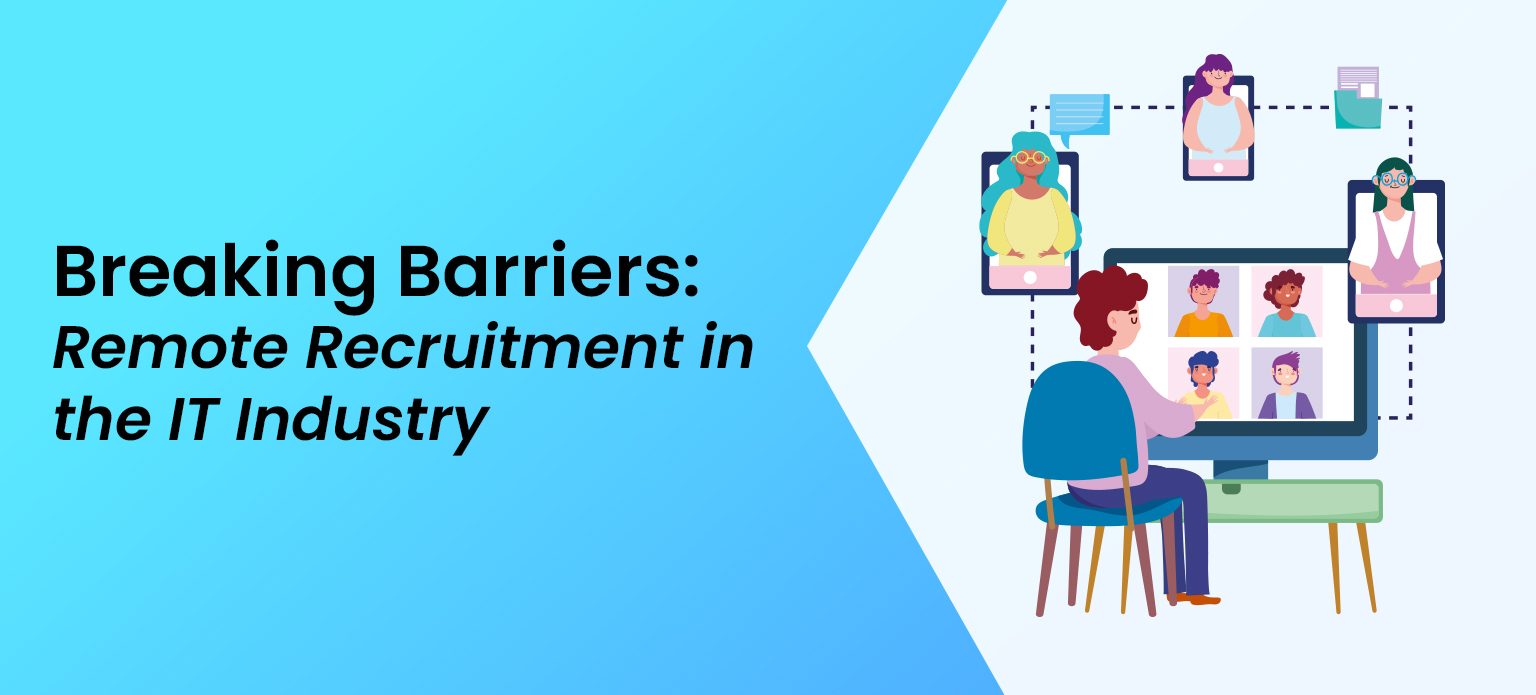After all the devastation and disaster the pandemic of 2020 left us with, the norm of remote working was its happy side-effect left as a parting gift. The world hasn’t stopped changing since. Adjusting to the ‘new normal’ while, for the first time, truly being aware. And the work environment in the IT industry evolved with it. Geographic barriers or long commutes no longer constrict employees from working with their preferred organisations. Professionals worldwide started looking for more flexible options that allowed them the work-life balance they had attained. With technological advancement, this turned into a remarkable transformation.
The traditional model of hiring restricted to the regional pool is long gone. Virtual meeting platforms, cloud computing, productivity-enhancing technologies – the tools and technology existed much before the pandemic. However, the industries stayed unaware of them with respect to remote working. Today, remote recruits are working with the same efficiency as on-site employees. They are meeting all the skill gaps local hiring couldn’t. All whilst sitting in the comfort of their home. In Pajamas.
Door to a Global Talent Pool
Being open to remote recruitment, organisations can not only retain more candidates but also source the skillsets required for the role without making compromises. With access to a wider and better talent pool, recruiters can make wiser hiring choices. Talent acquisition and management teams can perform target job postings to seek employers in the regions of their choice. The process is growing effective as we speak.
Eliminating Biases
Presently, organisations hiring within their region often lack workplace diversity and inclusion. Remote recruitment introduces regional and national diversity by including employees and contingent labour outside their demographic area. The reduction in bias by evaluating candidates solely based on their skills and experience allows the organisation to improve its brand value in the job market. As a result, recruiters in the IT industry are inclined towards remote hiring now more than ever.
Leveraging Technologies and Tools
From selection to interviews to onboarding to management, remote hiring is more streamlined. Recruiters leverage technology in all steps to make an efficient and effective pathway. They are not only easy but efficient. Both the candidates and talent acquisition team leverage the widespread adaptation to technology. A hiring expert and advocate, SHRM shares that 68% hire remotely while 90% of recruiters use technology. Significantly, technology is present each step of the way. Some of the popular tools are programmatic recruitment, marketing automation, chatbots, online interviews and ATS.
Offshoring Strategies
There is no doubt that remote recruitment puts quality on the table. According to The Deloitte Global Outsourcing Survey 2018, 59% of businesses witness an increase in efficiency and productivity after outsourcing their services. With access to a global pool of candidates, companies gain an edge. Organisations now recruit global talents bringing in a wider landscape to their business. In essence, the remote recruits work with more streamlined workflows, advanced contributions and maximum efficiency.
Cost Optimisation
Remote recruitment is not only work efficient but cost-effective too. Interviews taken online. Assessments shared, discussed and streamlined without physical communication. And oh, the paperwork reduction. Other the other end, candidates no longer commute just to attend an interview they may or may not crack. Reworking, a software focused on improving candidate experience, found that organisations save 70% of the cost by simply switching to offshore recruitment services.
Collaboration and Teamwork
It is a usual notion that remote working reduces the scope of collaboration and teamwork as it fails to build a physical connection. On the contrary, remote recruits implement inclusive practices. As a common practice, remote employees keep clear communication often written in the form of MOMs and encourage open dialogues. They contribute to the team with their tools and sources providing a learning scope for the organisation as well.
Challenges
While remote hiring leaves no requirement for management on the hiring committee’s plate, it does bring a few challenges. Organisations used to working with employees on-site find it difficult to shift their perspective for someone with no physical presence around them. With their traditional method of operation solidified over time, establishing remote communication requires more effort. Not to forget, the time difference is yet another challenge when hiring employees from other continents. However, with clear planning and delegating tasks to perform with longer deadlines, these can be overcome at a managerial level. Pro tip: Hire on remote worker and see how it goes!
Ready to hop on to the trend? Connect with Eximious Global to hire your next remote recruit.




